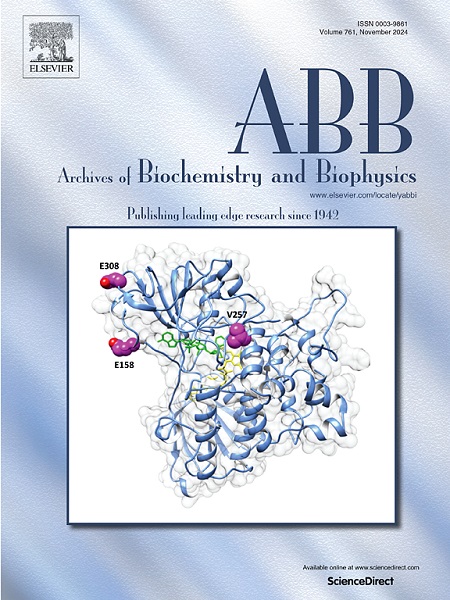Hippuric acid, a uremic toxin, binds to aggregation prone region of human lysozyme and potentiates the fibrillation: A biophysical insight
IF 3.8
3区 生物学
Q2 BIOCHEMISTRY & MOLECULAR BIOLOGY
引用次数: 0
Abstract
End-stage renal disease (ESRD) and human lysozyme (HL) amyloidosis are often interconnected, typically marked by elevated levels of uremic toxins in patients' blood. In this context, hippuric acid (HA), a uremic toxin derived from the metabolism of aromatic compounds, was investigated in vitro for its effect on HL fibrillation using spectroscopic, calorimetric, and computational methods. The results indicate that HA enhances HL fibrillation in a concentration-dependent manner, evidenced by increased ThT fluorescence and the detection of amyloid fibrils with a hydrodynamic radius of approximately 840.8 nm through dynamic light scattering and right-angle light scattering. Furthermore, HA promotes the conversion of HL's α+β structure into a predominantly β-sheet configuration, as confirmed by far-UV CD spectroscopy. This interaction occurs through the formation of a complex between HA and HL, stabilized by hydrogen bonds and hydrophobic interactions, as demonstrated by isothermal titration calorimetry (ITC) and computational studies. Specifically, HA binds to Q58 and N60 in the aggregation-prone region 2 (APR2) and Trp64 in non-aggregation-prone region, inducing conformational changes that favours fibrillation. The relative lytic activity of HL increase in presence of HA which further confirm the non-involvement of key residues, D35 and E53 in binding of HA to HL. Also, HL fibrils formed in presence of HA increases the hemolysis of RBCs and the appearance of more mis-shaped RBCs. Consequently, HA significantly enhances amyloid fibrillation in HL which provides valuable insights for future research focusing on in vivo studies, pre-clinical trials, and clinical applications.

求助全文
约1分钟内获得全文
求助全文
来源期刊

Archives of biochemistry and biophysics
生物-生化与分子生物学
CiteScore
7.40
自引率
0.00%
发文量
245
审稿时长
26 days
期刊介绍:
Archives of Biochemistry and Biophysics publishes quality original articles and reviews in the developing areas of biochemistry and biophysics.
Research Areas Include:
• Enzyme and protein structure, function, regulation. Folding, turnover, and post-translational processing
• Biological oxidations, free radical reactions, redox signaling, oxygenases, P450 reactions
• Signal transduction, receptors, membrane transport, intracellular signals. Cellular and integrated metabolism.
 求助内容:
求助内容: 应助结果提醒方式:
应助结果提醒方式:


